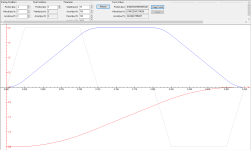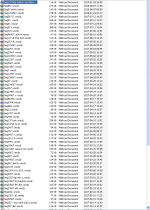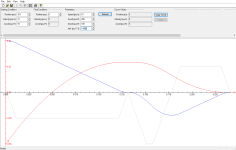Dear PLCtalk Forum,
I developed a generator for time-optimal trajectories with jerk limitation. You can access it online to calculate, display and download (XLSX or CSV) trajectories.
https://www.trajectorygenerator.com/ojet-online
The generation of jerk-limited trajectories is often used in automation and for the movement of large and precise machines (i.e. large telescopes), but also in robotics and CNC machines. Usually, a trajectory generator is placed in front of a control loop to generate a setpoint without discontinuities. Even though the topic of jerk-limited trajectories seems simple and there are hundreds of publications on the topic, most proposed solutions are either approximations (so the given motion constraints are either not exactly matched or not time-optimal), or only work for specific sets of parameters. What sets this trajectory generator apart is the possibility to provide a time-optimal solution for any given motion constraint. Another advantage is that arbitrary start and target motion states (hence position, velocity and acceleration) can be chosen.
I put in quite some work and effort to develop this trajectory generator. The problem is way more tricky than it initally looks, as there are many different cases to consider. Finding a stable mathematical solution is also not straightforward.
I hope you'll find the tool useful and I am really happy to listen to your feedback!
Greetings,
Stefan
I developed a generator for time-optimal trajectories with jerk limitation. You can access it online to calculate, display and download (XLSX or CSV) trajectories.
https://www.trajectorygenerator.com/ojet-online
The generation of jerk-limited trajectories is often used in automation and for the movement of large and precise machines (i.e. large telescopes), but also in robotics and CNC machines. Usually, a trajectory generator is placed in front of a control loop to generate a setpoint without discontinuities. Even though the topic of jerk-limited trajectories seems simple and there are hundreds of publications on the topic, most proposed solutions are either approximations (so the given motion constraints are either not exactly matched or not time-optimal), or only work for specific sets of parameters. What sets this trajectory generator apart is the possibility to provide a time-optimal solution for any given motion constraint. Another advantage is that arbitrary start and target motion states (hence position, velocity and acceleration) can be chosen.
I put in quite some work and effort to develop this trajectory generator. The problem is way more tricky than it initally looks, as there are many different cases to consider. Finding a stable mathematical solution is also not straightforward.
I hope you'll find the tool useful and I am really happy to listen to your feedback!
Greetings,
Stefan







